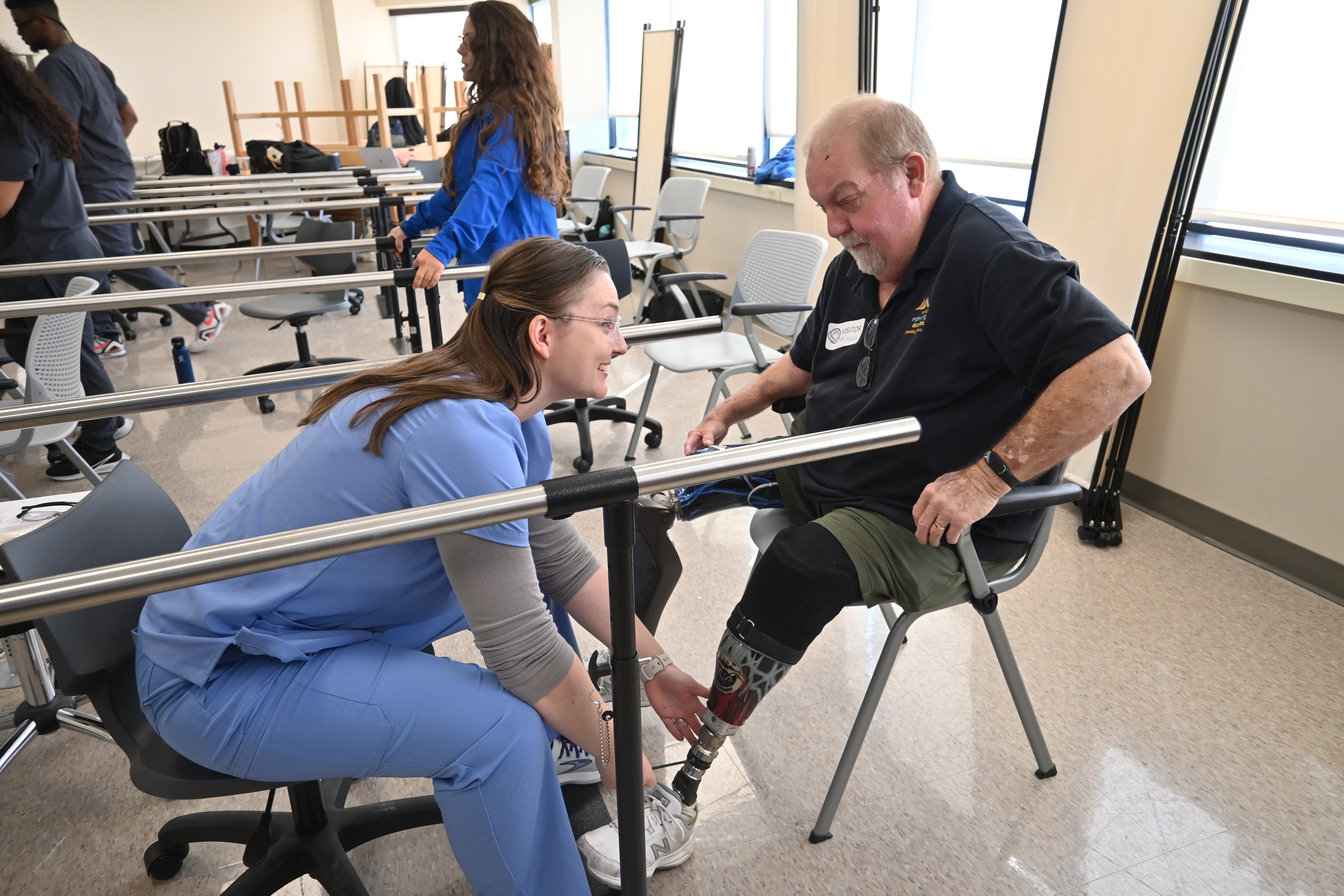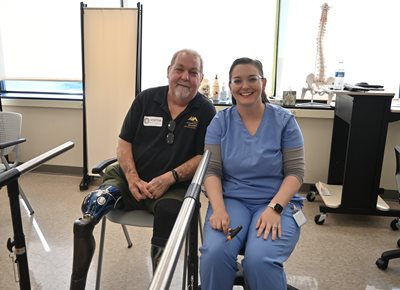
Phantom pain is not a figment of one’s imagination. It’s very real.
Phantom pain is something that may be unfamiliar to most, but it affects a large portion of the amputee population, according to Julie Quinlan, MPO, MS, CPO, ATC, FAAOP, instructor in the Orthotics and Prosthetics (O&P) program at Salus University.
September is Pain Awareness Month and amputees can benefit from Targeted Muscle Reinnervation (TMR), a surgical procedure used to improve the control of upper limb prostheses, but also can reduce phantom pain for both upper and lower limb amputees if they are appropriate candidates. Residual nerves from the amputated limb are reinnervated into muscle targets that have otherwise lost their function.
 “Phantom pain is not triggered by a new injury, it’s that the nerve continues to fire,” said Quinlan. Phantom pain occurs, she said, in about 25 percent of all amputees, who have chronic pain as a result. Typically, when an amputation is done, the nerve is tucked into the muscle. But that nerve continues to try to find a home or reconnect. There are still transmissions from the brain to that nerve and it creates a signal of pain.
“Phantom pain is not triggered by a new injury, it’s that the nerve continues to fire,” said Quinlan. Phantom pain occurs, she said, in about 25 percent of all amputees, who have chronic pain as a result. Typically, when an amputation is done, the nerve is tucked into the muscle. But that nerve continues to try to find a home or reconnect. There are still transmissions from the brain to that nerve and it creates a signal of pain.
“This pain can prevent patients from wearing a prosthesis because they cannot tolerate pressure against the area,” said Quinlan.
According to medical researchers, if surgeons take that nerve and give it a home by connecting it to another nerve, it actually helps reduce the pain. Initially, TMR was used only for upper limb amputees. In recent years though, it’s been used for lower limb amputees and has been found to be successful as well, allowing patients to wear prostheses with reduced pain. Other ways to reduce the pain include medications — which work for some patients and not for others, wearing a “shrinker” (a tight compression sock), and desensitization therapies.
“For a lot of individuals, it’s difficult to relieve the pain or find a position that’s comfortable,” said Quinlan. “It comes on randomly so it can be difficult to manage.”
Students in the Salus O&P program learn about TMR when they are studying myoelectric prosthesis, a powerful artificial limb that is controlled with electrical signals generated by one’s own muscles.
“When TMR is performed, it allows amplification of the nerve signal to optimize the performance of the prosthesis,” said Quinlan.